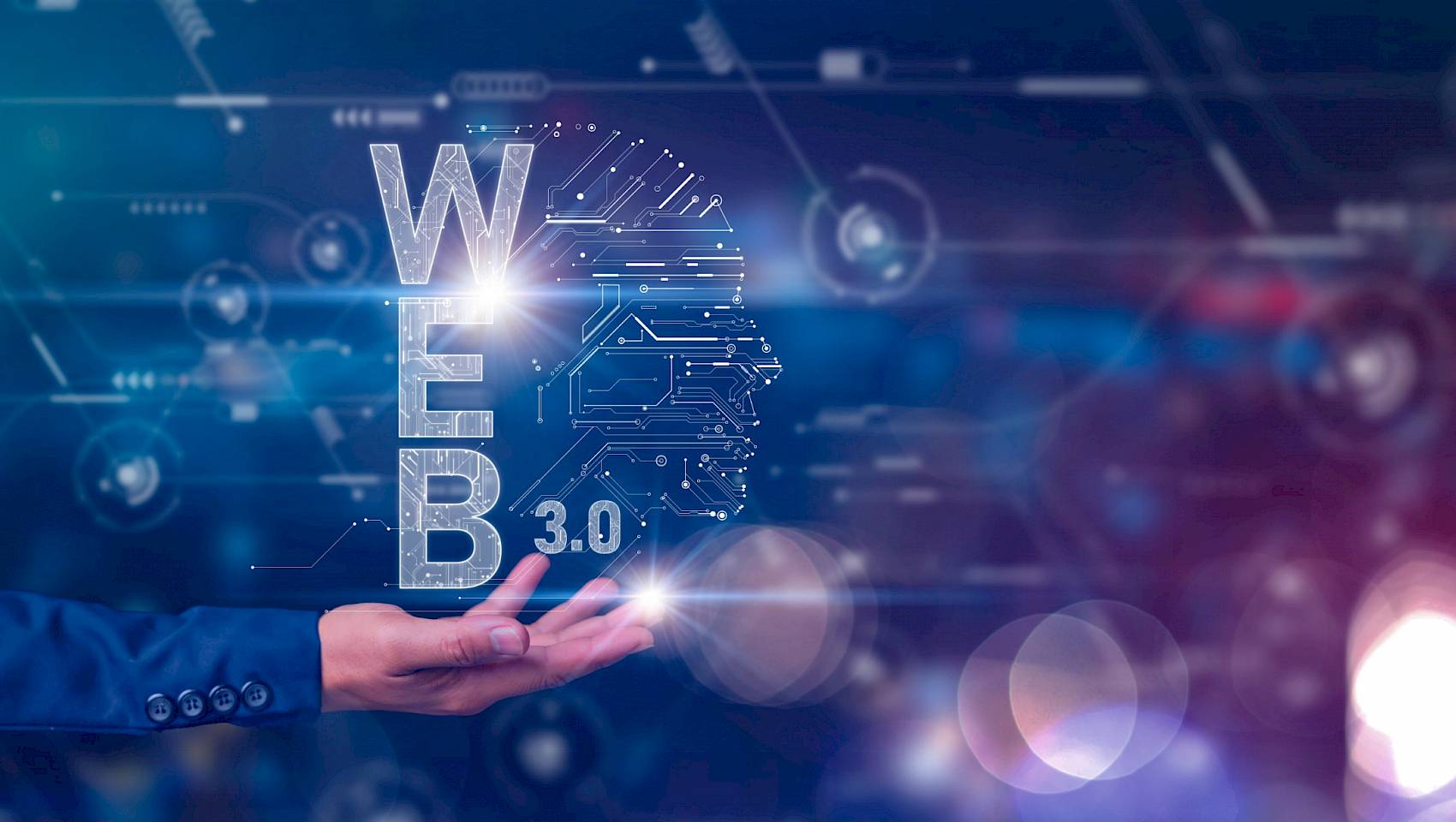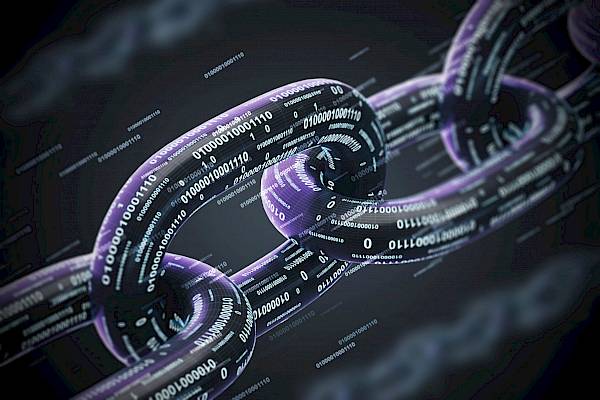Over the first two months of our Target Tech Bytes series, we dipped our toe in blockchain and dived right into cryptocurrency, demystifying the subjects into digestible bitesize blogs. Those topics link us neatly to our next edition, the enigma that is Web 3.0.
It's a subject that's attracted much interest in recent times, with even Elon Musk questioning it when he famously tweeted "Has anyone seen Web 3.0? I can't find it". You'd be forgiven for not being up to speed with the inner workings of this emerging technology. So, what exactly is Web 3.0, and why all the hype? Let's find out.
Web 3.0 is so shiny and new; there isn't even a universally accepted definition for it. Effectively, it's the concept of the next evolution of the Internet. To understand Web 3.0 a bit more, we need to go back in time to the origins of the Web as we know it!
The World Wide Web was born
The first phase of the World Wide Web, Web 1.0, was created by British scientist Tim Burners-Lee in 1990. Described as the 'read-only' Web or a 'one to many' online platform, it allowed users to easily search for and read information.
Web 1.0 comprised a collection of static text and images with little user interaction. It satisfied the requirement of website owners by making information available to search and read on static sites.
The Dot-com bubble
The exponential growth of the Internet and its commercialisation in the 90s attracted the attention of venture capitalists and investors looking to profit from its growth potential. They started to plough billions into internet start-up firms, even though many didn't have a realistic business plan or clear-cut strategy to achieve profitability. Nevertheless, they hoped they'd take advantage of the digital boom. This time of peak expectation and high-risk investments signalled the start of the dot-com bubble in 1995.
As the years passed, many firms prioritised establishing and maintaining their online presence when their financial performance was at odds with their often widely optimistic company valuations. In March 2000, rising interest rates and an imminent recession in Japan triggered a wave of panic and movement of investments. Many of the technology start-ups declared themselves bankrupt, and the dot-com bubble burst, leading to a stock market crash.
The crash led to a collective loss of an eye-watering $5 trillion in the stock market. Whilst most tech start-ups didn't survive the dot-com era, the lessons learned helped lay the foundations for the Internet to evolve.
The Rise of the Social Web
The shift from Web 1.0 to Web 2.0 didn't happen overnight. The phrase Web 2.0 first appeared in an article called 'Fragmented Future' by Darcy DiNucci in 1999.
In 2004, Web 2.0 became a popular term and revealed a 'new age' of the Internet, although not a replacement for Web 1.0. Labelled as the 'read/write' Web, it saw a shift from static webpages to dynamic 'many-to-many' content. It changed how we used the Internet; we could now create and interact with published content.
This iteration of the Internet aimed to improve end users' experience. Individuals could set up their own websites, post blogs and videos, and more. It helped create the likes of online communities, flooding the Web with user-generated content (UGC).
The components of Web 2.0 enabled the development of the types of software, platforms, and applications that we see today, such as Facebook, Netflix and TikTok.
Whilst Web 2.0 has improved how we use the Internet, the centralised nature of Web 2.0 has also thrown up challenges such as privacy concerns, security risks and a rise in online bullying and cyber-attacks.
Tech giants like Amazon, Google and Facebook collect personal data from their users, including location, search history, and other personal information. This data is then used for the company's commercial gain and often sold on without explicit consent or knowledge. Third parties use this data to bombard individuals with highly targeted advertisements. This can lead to the misuse of personal information, exposing users to privacy violations and identity theft.
In 2019, Facebook was fined a record-breaking $5 billion by the Federal Trade Commission (FTC) due to violating the privacy of over 50 million users. More recently, TikTok was fined £12.7 million by the Information Commissioner's Office (ICO) for several breaches of data protection law, including failing to use children's personal data lawfully.
So, what's next?
Web 3.0, the semantic Web
Coined in 2014 by Gavin Wood, Web 3.0 is the next evolution of the Internet.
At times referred to as the Semantic Web, Web 3.0 is a more intelligent and connected web that aims to make the Internet more user-friendly and accessible to everyone.
Web 3.0 proposes to be decentralised, where individuals will be in control of their data rather than it being controlled by tech giants like Google. Meaning users become content owners instead of just content users.
Web 3.0 will also deploy Artificial Intelligence (AI) and Machine Learning technology to improve user experience by providing smarter responses personalised to the user's needs.
This version of the Web is also set to bring about a revolution in e-commerce. It will leverage blockchain technology to record transactions on immutable ledgers, making it more secure and transparent. Enabling the expansion of an already rapidly growing Decentralised Finance (DeFi) sector, Web 3.0 will facilitate the creation of decentralised financial applications (dApps) that can operate without the likes of banks or financial institutions.
As with previous iterations of the internet, Web 3.0 has potential downsides, including how the decentralised nature of Web 3.0 would make regulation and enforcement tricky. Regulators would need to consider whether existing regulations sufficiently protect internet users or whether new rules would be required.
What's the difference between Web 2.0 and Web 3.0?
Web 3.0 is not a replacement for Web 2.0; it's the next logical step. Here are some differences between the existing Web 2.0 and the proposed Web 3.0:
- Concept - Web 2.0 is focused on allowing people to connect with each other through centralisation. Web 3.0 will instead focus on decentralising the Internet and empower users to interact without an intermediary
- Transactions – in Web 2.0, transactions are made in fiat money via a centralised platform such as a bank. Web 3.0 proposes to use encrypted digital transactions via a decentralised blockchain like Ethereum
- Ownership and storage of Data - with Web 2.0, user identity and data are owned by huge companies who sell them on without permission. Centralised data storage is prone to data breaches and cyber-attacks. Web 3.0 users will have control over their own data and decide what data their happy to share with companies
- Data is stored across a network of computers worldwide, making it more secure and resilient to attacks, though GDPR (General Data Protection Regulation) and US Safe Harbour data sharing rules amongst others will need to be considered
- Semantic - Web 2.0 is mostly a text-based web with limited multimedia content. Web 3.0 will be a more immersive and interactive web by leveraging technologies like machine learning and blockchain
Who's using Web 3.0?
To put it simply, no one! Web 3.0 is still a concept, and there's yet to be a confirmed date as to when this next evolution of the Internet will come to life. However, some firms are already making waves when it comes to investing in Web 3.0 technologies. Gartner predicts that by 2024, 25% of enterprises will use centralised services wrapped around decentralised Web 3.0 applications. The Internet as we know it today is based on Web 2.0 components, yet the ground-breaking technologies that will be pivotal to Web 3.0 are already part of day-to-day life.
How can your business prepare for Web 3.0?
Web 3.0 promises to create a more intelligent, connected, and decentralised Web. It has the potential to radically transform financial services. Hiring the right talent now or upskilling your existing teams in technologies such as blockchain can help to prepare for what seems increasingly like an inevitable shift.
Developing decentralised applications can also help when it comes to preparing for the shift to an autonomous, decentralised network.
The desire by individuals to control their data combined with the significant investment leading tech players, like IBM, are making to prepare for Web 3.0 suggest the next tech wave is closer than we think. So, the real question to ask is will you be an early adopter or be swept aside.
Web 3.0 buzz words
Some buzz words used when talking about Web 3.0:
- Semantic Web – another name for Web 3.0, proposing to use AI and machine learning technologies
- Decentralisation - the transfer of authority and responsibility from a centralised organisation, government, or party to a distributed network
- Ethereum – a public blockchain network
- Blockchain - is a distributed database that functions both as a digital ledger and a mechanism enabling the secure transfer of assets without an intermediary
References
https://www.simplilearn.com/what-is-web-1-0-web-2-0-and-web-3-0-with-their-difference-article
https://www.techopedia.com/2/27884/internet/social-media/what-is-the-difference-between-social-media-and-web-20
https://www.investopedia.com/terms/d/dotcom-bubble.asp
https://www.investopedia.com/terms/w/web-20.asp#:~:text=approach%20problems%20differently.-,Understanding%20Web%202.0,rather%20than%20just%20viewing%20it.
https://www.techtarget.com/whatis/definition/Web-20-or-Web-2
https://blogs.gartner.com/avivah-litan/2022/02/07/what-is-web3/

Be first to get the lowdown!
Sign up to our newsletter to get the latest edition of Tech Bytes straight to your inbox.



